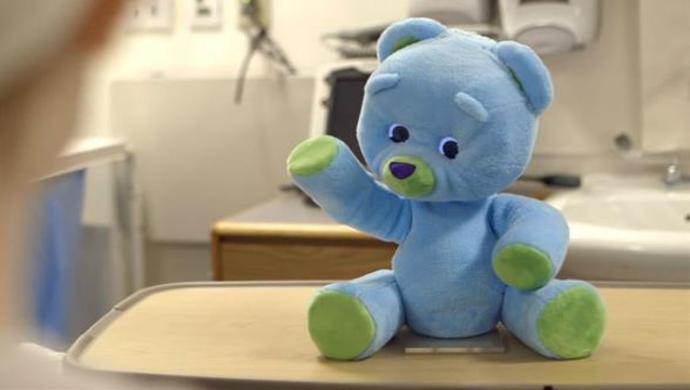Huggable an AI-powered robot was successful in bringing positive emotions in hospitalised children

Imagine being four years old, stuck in a hospital bed, and tethered to beeping machines by tubes and wires for an extended period of time.
This is a common experience in most hospital pediatric wards.
Children experiencing this type of hospitalization can struggle with the restrictions placed on them and the emotions that accompany such an experience.
Also Read: Why AI will be critical to brand strategy
But a new study conducted by MIT and published in the American Academy of Pediatrics shows promise in using social robots to help children cope with these emotions.
Social Robots
Social robots are AI systems designed to interact with humans and other robots. Some are controlled remotely and others are completely autonomous in their interactions.
In the study, a robotic teddy bear named “Huggable” was used by child life specialists to observe its calming effects in hospitalised children.
Interventions that child life specialists typically use consist of preparation, play, education, and distraction during routine medical care, as well as before, during, and after difficult procedures.
Children in the study were provided with one of three toys: Huggable the social robot teddy bear, a plush stuffed bear, or a tablet-based virtual Huggable. Huggable outperformed the other two toys at improving patient outcomes.
Though the study’s primary focus was exploring the feasibility of integrating Huggable into the various interventions, the results also demonstrated that by playing with Huggable children experienced more positive emotions overall.
The children connected emotionally with Huggable asking it questions and inviting it to meet their families.
These children were more physically active which researchers indicated could contribute to better and faster recovery for sick children.
Uses
Researchers said that even though the study was small, it was the first to explore social robotics in a real-world inpatient pediatric setting with ill children.
They cautioned that Huggable was meant to support health care specialists, not replace them. According to a pediatric psychologist, Deirdre Logan,
“Child Life staff provide a lot of human interaction to help normalize the hospital experience, but they can’t be with every kid, all the time. Social robots create a more consistent presence throughout the day.”
Another possible benefit Logan pointed out is its ability to be used with children who might feel more comfortable with a robotic stuffed animal than with other people.
“It’s exciting knowing what types of support we can provide kids who may feel isolated or scared about what they’re going through,” said Logan.
Social robots offer another promising tool Child Life specialists can use. For children experiencing lengthy hospital stays or intimidating procedures, these social robots win the day.
–
Article originally published on KennethJPapucci.com
Editor’s note: e27 publishes relevant guest contributions from the community. Share your honest opinions and expert knowledge by submitting your content here.
Join our e27 Telegram group here, or our e27 contributor Facebook page here.
Image Credit: The Horizon Tracker
The post A special robot that can soothe emotions: a study of social robots appeared first on e27.